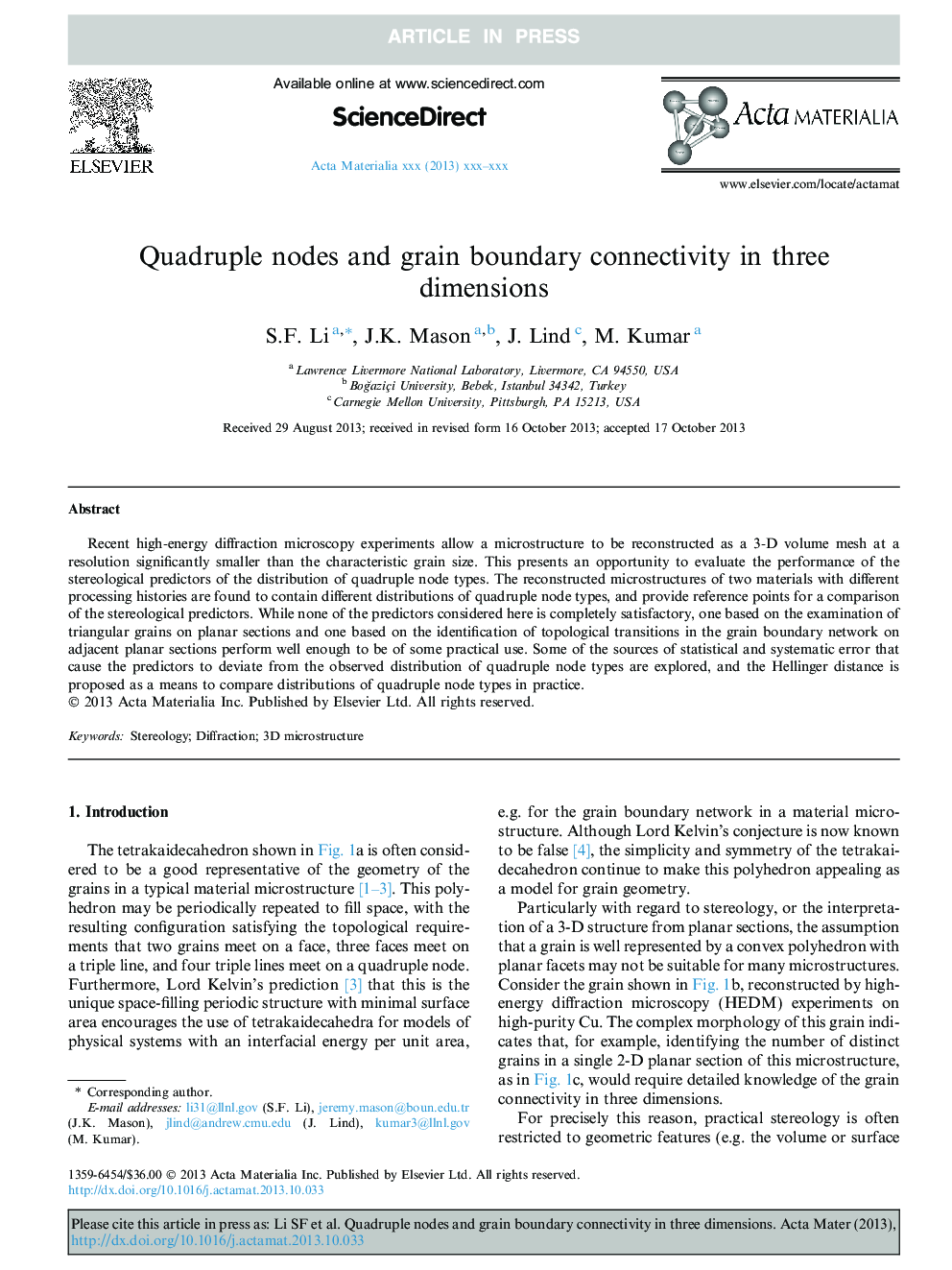| Article ID | Journal | Published Year | Pages | File Type |
|---|---|---|---|---|
| 7882681 | Acta Materialia | 2014 | 11 Pages |
Abstract
Recent high-energy diffraction microscopy experiments allow a microstructure to be reconstructed as a 3-D volume mesh at a resolution significantly smaller than the characteristic grain size. This presents an opportunity to evaluate the performance of the stereological predictors of the distribution of quadruple node types. The reconstructed microstructures of two materials with different processing histories are found to contain different distributions of quadruple node types, and provide reference points for a comparison of the stereological predictors. While none of the predictors considered here is completely satisfactory, one based on the examination of triangular grains on planar sections and one based on the identification of topological transitions in the grain boundary network on adjacent planar sections perform well enough to be of some practical use. Some of the sources of statistical and systematic error that cause the predictors to deviate from the observed distribution of quadruple node types are explored, and the Hellinger distance is proposed as a means to compare distributions of quadruple node types in practice.
Related Topics
Physical Sciences and Engineering
Materials Science
Ceramics and Composites
Authors
S.F. Li, J.K. Mason, J. Lind, M. Kumar,
